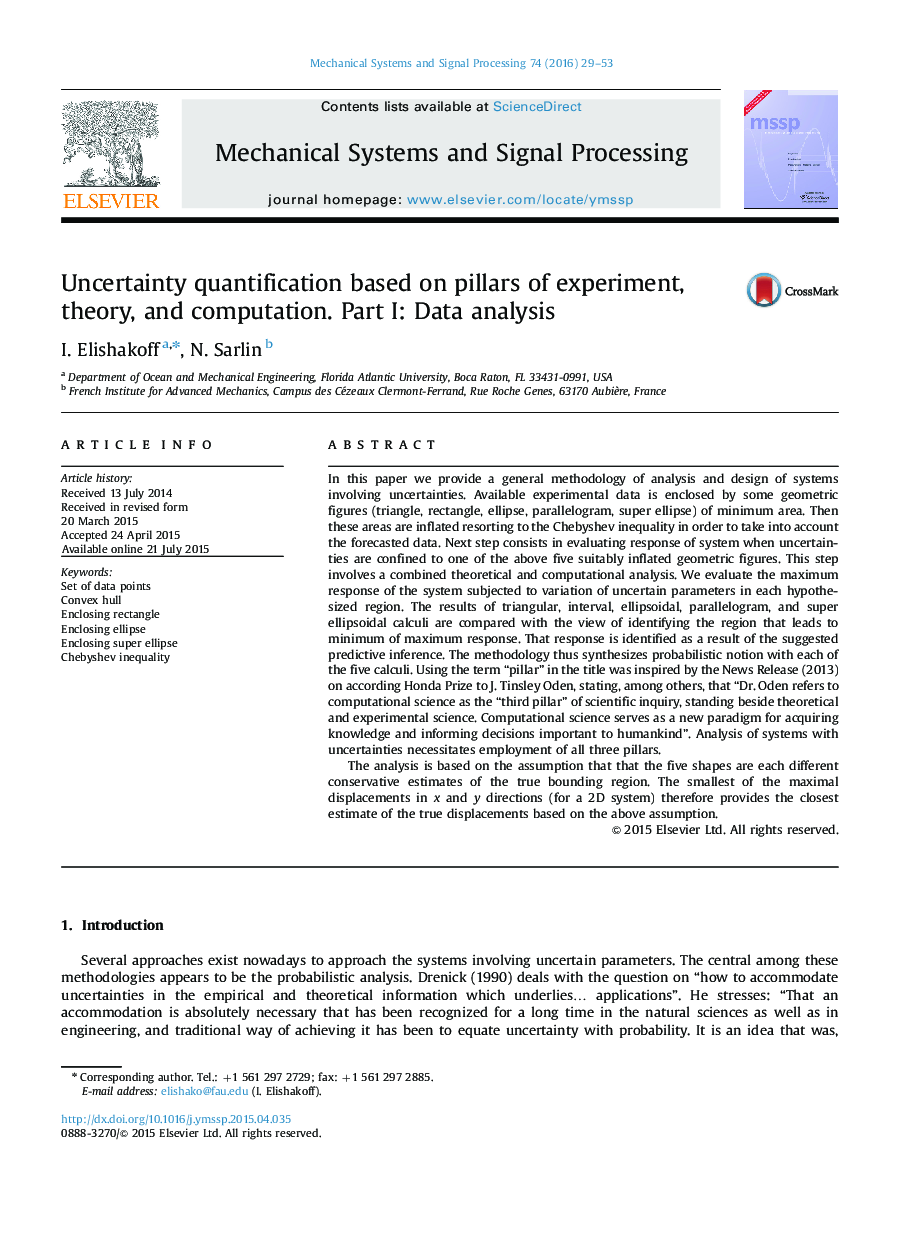| کد مقاله | کد نشریه | سال انتشار | مقاله انگلیسی | نسخه تمام متن |
|---|---|---|---|---|
| 561025 | 1451857 | 2016 | 25 صفحه PDF | دانلود رایگان |
In this paper we provide a general methodology of analysis and design of systems involving uncertainties. Available experimental data is enclosed by some geometric figures (triangle, rectangle, ellipse, parallelogram, super ellipse) of minimum area. Then these areas are inflated resorting to the Chebyshev inequality in order to take into account the forecasted data. Next step consists in evaluating response of system when uncertainties are confined to one of the above five suitably inflated geometric figures. This step involves a combined theoretical and computational analysis. We evaluate the maximum response of the system subjected to variation of uncertain parameters in each hypothesized region. The results of triangular, interval, ellipsoidal, parallelogram, and super ellipsoidal calculi are compared with the view of identifying the region that leads to minimum of maximum response. That response is identified as a result of the suggested predictive inference. The methodology thus synthesizes probabilistic notion with each of the five calculi. Using the term “pillar” in the title was inspired by the News Release (2013) on according Honda Prize to J. Tinsley Oden, stating, among others, that “Dr. Oden refers to computational science as the “third pillar” of scientific inquiry, standing beside theoretical and experimental science. Computational science serves as a new paradigm for acquiring knowledge and informing decisions important to humankind”. Analysis of systems with uncertainties necessitates employment of all three pillars.The analysis is based on the assumption that that the five shapes are each different conservative estimates of the true bounding region. The smallest of the maximal displacements in x and y directions (for a 2D system) therefore provides the closest estimate of the true displacements based on the above assumption.
Journal: Mechanical Systems and Signal Processing - Volume 74, 1 June 2016, Pages 29–53
